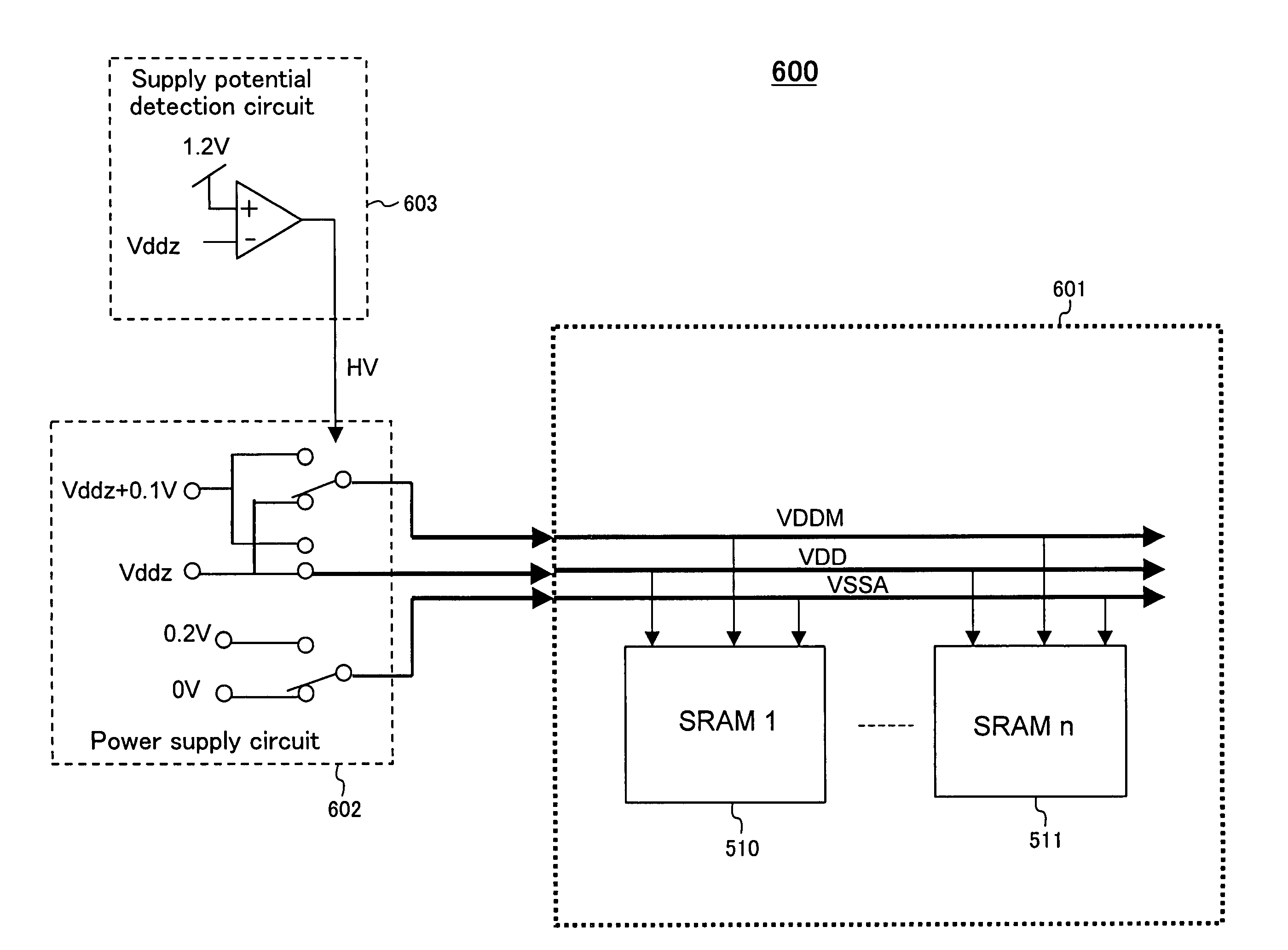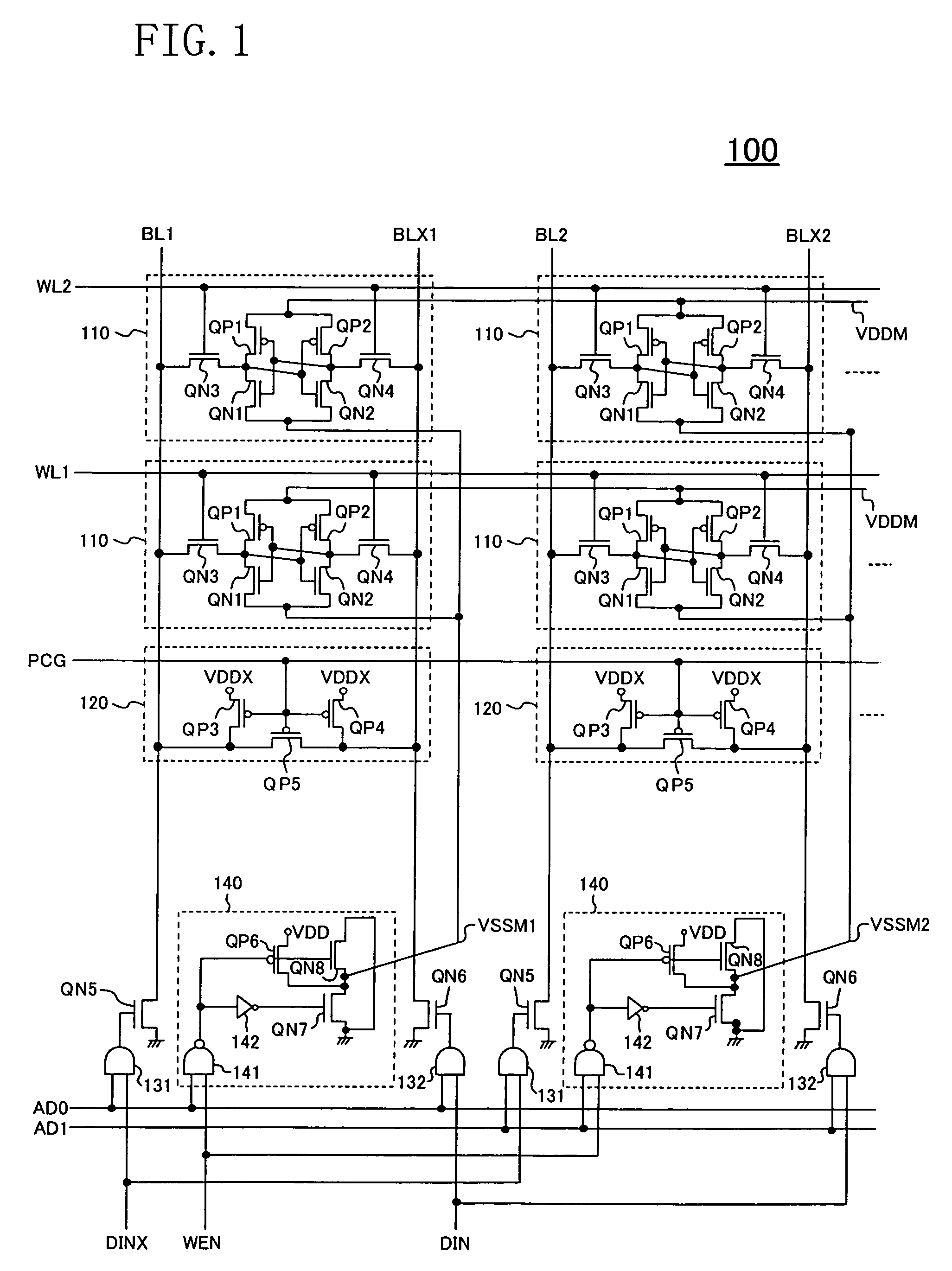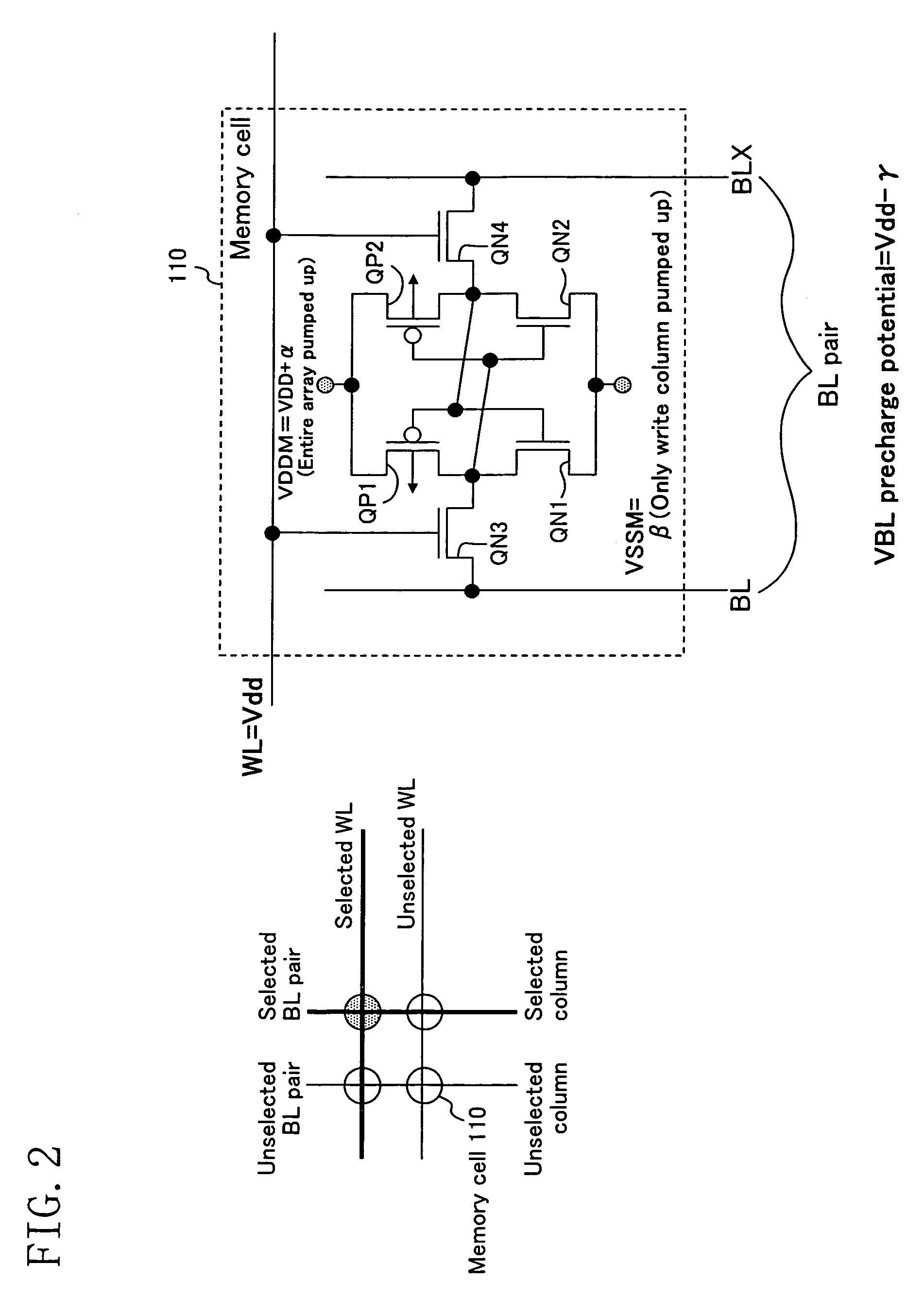Semiconductor memory
a semiconductor memory and memory cell technology, applied in the field of semiconductor memory, can solve the problems of large static noise margin in write operation, inability to achieve stable memory cell characteristics, etc., to achieve the effect of reducing the precharge level of bit lines, reducing the current injected to memory cells, and improving the write level
- Summary
- Abstract
- Description
- Claims
- Application Information
AI Technical Summary
Benefits of technology
Problems solved by technology
Method used
Image
Examples
embodiment 1
[0135]FIG. 1 is a block diagram showing the structure of a semiconductor memory 100 according to embodiment 1 of the present invention. It should be noted that, in FIG. 1, circuits for the reading system are omitted for simplicity of description.
[0136]Referring to FIG. 1, the semiconductor memory 100 includes memory cells 110, bit line precharge circuits 120, AND circuits 131 and 132, low-data holding power supply controlling circuits 140, and transistors QN5 and QN6 (N-type MOS transistors).
[0137]In FIG. 1, reference numerals WL1 and WL2 denote word lines. The word lines WL1 and WL2 extend in the row direction. The word lines WL1 and WL2 are connected to supply potential VDD when selected but connected to the ground when unselected.
[0138]Bit lines BL1, BL2, BLX1 and BLX2 extend in the column direction. Bit lines BL1 and BLX1 constitute a bit line pair, and bit lines BL2 and BLX2 constitute another bit line pair. One of each bit line pair (the pair of bit lines BL1 and BLX1 and the ...
embodiment 2
[0175]In embodiment 2, applications of the present invention to a 2-port SRAM which has two ports and a multi-port SRAM which has more than two access ports are described.
[0176]These semiconductor memories are also basically formed by cross-coupling of inverters for holding a pair of high data and low data. Therefore, the control technique of embodiment 1 for the memory cell low-data holding power supply, etc., can be commonly used in embodiment 2.
[0177]FIG. 4 is a block diagram showing the structure of a semiconductor memory 200 according to embodiment 2 of the present invention.
[0178]The semiconductor memory 200 includes memory cells 210 and low-data holding power supply controlling circuits 220 in place of the memory cells 110 and the low-data holding power supply controlling circuits 140 of the semiconductor memory 100. The semiconductor memory 200 further includes bit line precharge circuits 120, AND circuits 131 and 132, and transistors QN5 and QN6 as does the semiconductor me...
embodiment 3
[0193]FIG. 7 is a block diagram showing the structure of a semiconductor memory 300 according to embodiment 3 of the present invention. As shown in FIG. 7, the semiconductor memory 300 includes memory cells 310 in place of the memory cells 210 of the semiconductor memory 200 and further includes inverters 320.
[0194]Specifically, referring to FIG. 8, the memory cell 310 does not include the access transistor QN4 of the memory cell 210, and the write bit line is connected only to the access transistor QN3. That is, the number of write bit lines is smaller in the semiconductor memory 300 by one than in the semiconductor memory 200.
[0195]In FIG. 8, the current drivability of the access transistor QN3 is set larger than that of the drive transistors QN1 and QN2. For example, the current drivability may be set by setting the threshold value of the access transistor QN3 lower than that of the drive transistors QN1 and QN2. Alternatively, the setting may be realized by increasing the transi...
PUM
 Login to View More
Login to View More Abstract
Description
Claims
Application Information
 Login to View More
Login to View More - R&D
- Intellectual Property
- Life Sciences
- Materials
- Tech Scout
- Unparalleled Data Quality
- Higher Quality Content
- 60% Fewer Hallucinations
Browse by: Latest US Patents, China's latest patents, Technical Efficacy Thesaurus, Application Domain, Technology Topic, Popular Technical Reports.
© 2025 PatSnap. All rights reserved.Legal|Privacy policy|Modern Slavery Act Transparency Statement|Sitemap|About US| Contact US: help@patsnap.com



